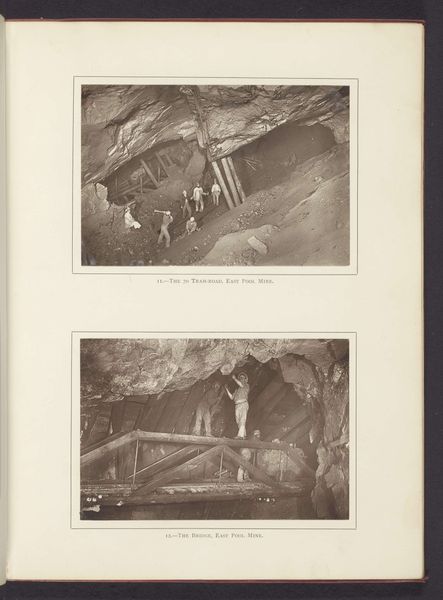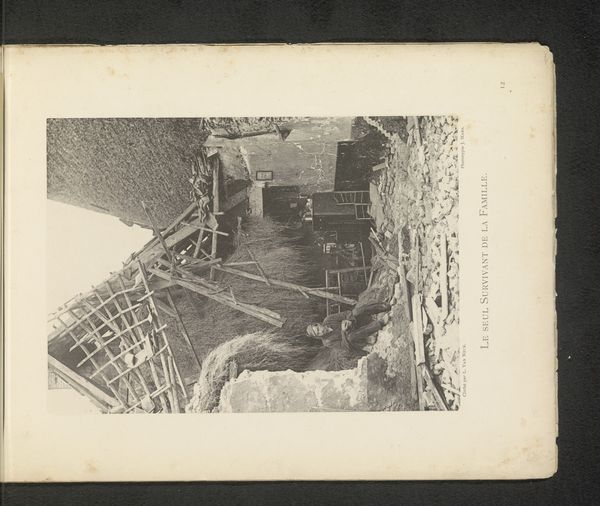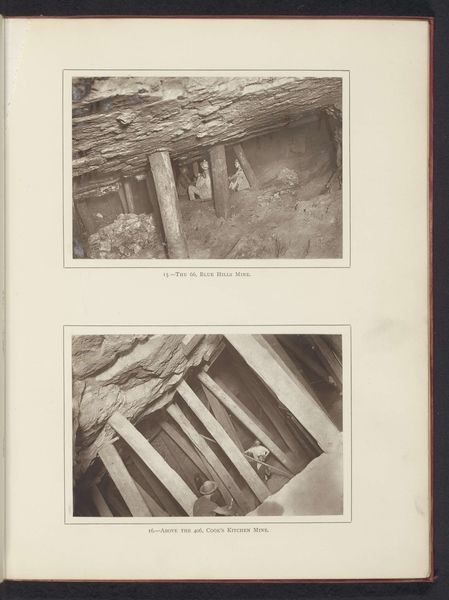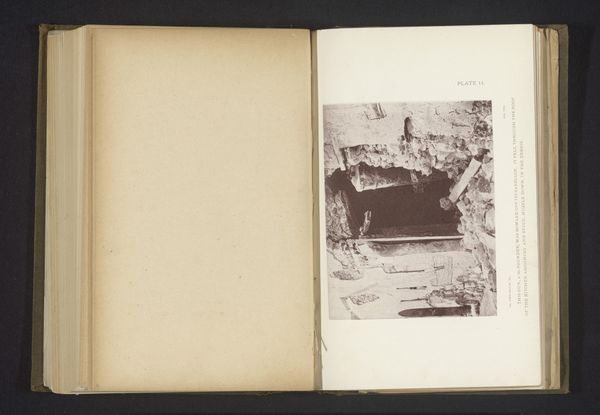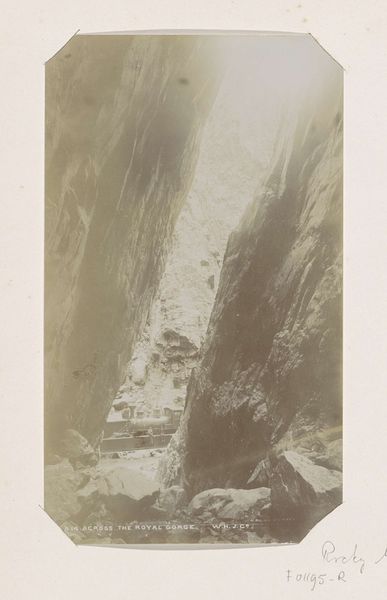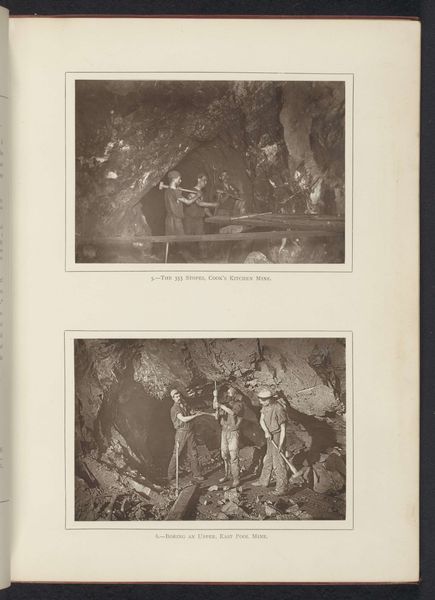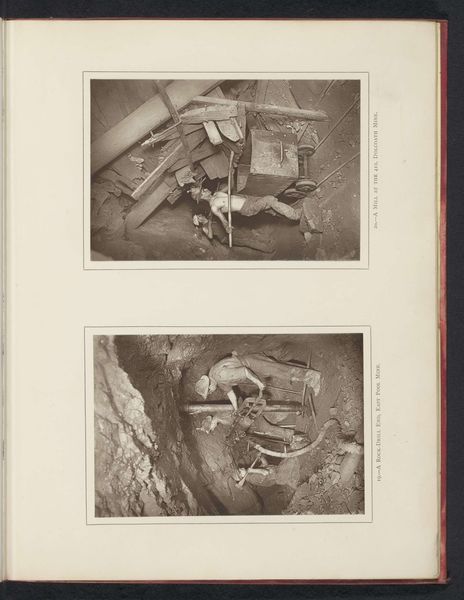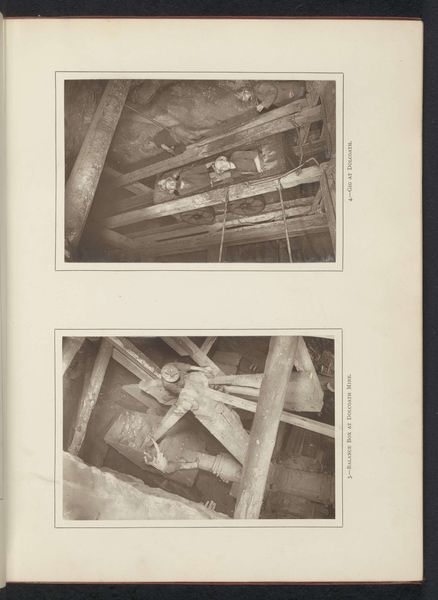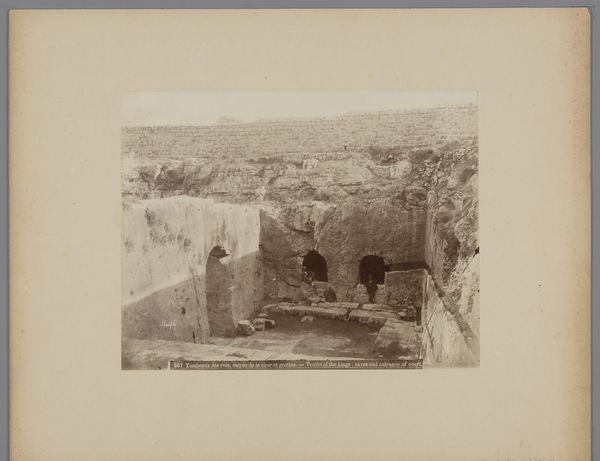
#
pencil drawn
#
aged paper
#
toned paper
#
pale palette
#
ink paper printed
#
old engraving style
#
white palette
#
personal sketchbook
#
unrealistic statue
#
watercolor
Dimensions: height 243 mm, width 304 mm
Copyright: Rijks Museum: Open Domain
Curator: This is "Galleries in a Mine in Cornwall," created around 1893 by John Charles Burrow. It appears to be an ink drawing, possibly reproduced on paper from the artist’s sketchbook. Editor: The mood is claustrophobic. Those pale lines sketch out these rough-hewn timber structures within what seems like a barely supported cavity. It makes me wonder about the lives of the workers there and the dangers they faced. Curator: Indeed. Burrow's choice of a monochrome palette limits our ability to visually decipher the complex, cramped conditions. Observe how his skillful use of shading does, however, effectively create depth, even conveying the low lighting in such spaces. Editor: Absolutely, and I see a poignant commentary, though possibly unintentional, on class and labour. The obscuring palette creates a sense of anonymity that, to me, embodies the social and political conditions that dehumanized miners and subjected them to life-threatening working conditions. These galleries were their reality. Curator: Perhaps, but let’s look closely at the composition itself. Note Burrow's emphasis on the structural integrity of the wood, on the lines and angles reinforcing these caverns. It underscores the artist's engineering mindset, an effort to portray not necessarily misery but more a feat of human ingenuity within a harsh natural environment. Editor: But what about the figures that seem engulfed in shadow and hardship? How can we divorce their representation from the very real dangers they encountered: gas explosions, collapses, and floods? Curator: Such environmental pressures could easily apply, and I respect that point. To close out, I would like to point out how Burrow transforms this sketch into an exercise in capturing depth through linear definition and subtle tonal changes. It transcends mere documentation, achieving its own abstract pictorial logic. Editor: In the end, it is undeniable this work bears witness to the intersection of industrialization, social inequalities, and individual human stories, all concealed and illuminated through Burrow’s graphic marks. The work stands both as art and a muted historical record of how society extracts both resources and the laboring bodies attached to that system.
Comments
No comments
Be the first to comment and join the conversation on the ultimate creative platform.

